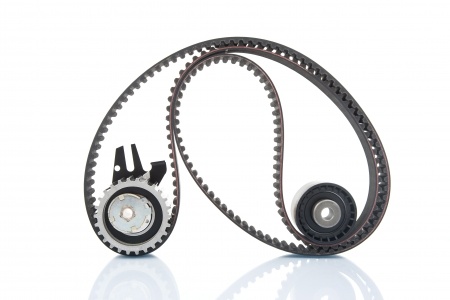One of the most overlooked parts of a vehicle, and one of the most common garage repairs is the timing belt, otherwise known as the cambelt. Your car’s timing belt may look like an accessory, but the fact is that if it fails, your car will suddenly stop, and, if you’re lucky, you will find yourself stranded on the side of the road waiting for a recovery truck. If you’re unlucky your car’s engine will be seriously damaged, if not ruined.
What does the Timing Belt do?
Timing belts are typically made of nylon reinforced rubber, with square teeth located on the inside surface. While you drive, the belt transfers the rotation of the crankshaft the camshaft, which in turn activates the valves that provide air and fuel to the cylinders and expel combustion gases to the exhaust system.
Inside your car, the valves and pistons move up and down rapidly. Modern engines are not built to allow clearance between a valve that is down and a piston that is up, so this is where the timing belt comes in, since it is what keeps the valves and pistons from colliding.
If your timing belt fails, and a collision occurs, the damage to the cylinder head, cylinder walls, valves, and pistons can be extensive, and expensive as well.
More modern cars have been built to rely on a timing chain as opposed to a belt. While these are typically longer lasting, they operate on essentially the same principal, and require replacement and maintenance, which varies by car.
Typically, you can expect to have to replace your timing belt or chain every 50,000 to 70,000 miles, although some cars need more regular changes – a 1998 Vauxhall Astra 1.6 will require a change every 36000 miles for example.
Cambelt Change
Replacing a timing belt or chain requires the removal of the engine drive belt, the component responsible for operating the alternator, water pump, power steering pump, and air conditioner.
Be sure to find out how often the timing belt or chain on your car should be replaced. Your vehicle’s owners manual will also be able to provide guidelines as to timing belt replacement and maintenance, or the useful website http://www.mytimingbelt.com/ can help.
We routinely change timing belts here at Triggs on all kinds of vehicles so feel free to contact us if you have concerns about yours. It really is one servicing job not to avoid.

